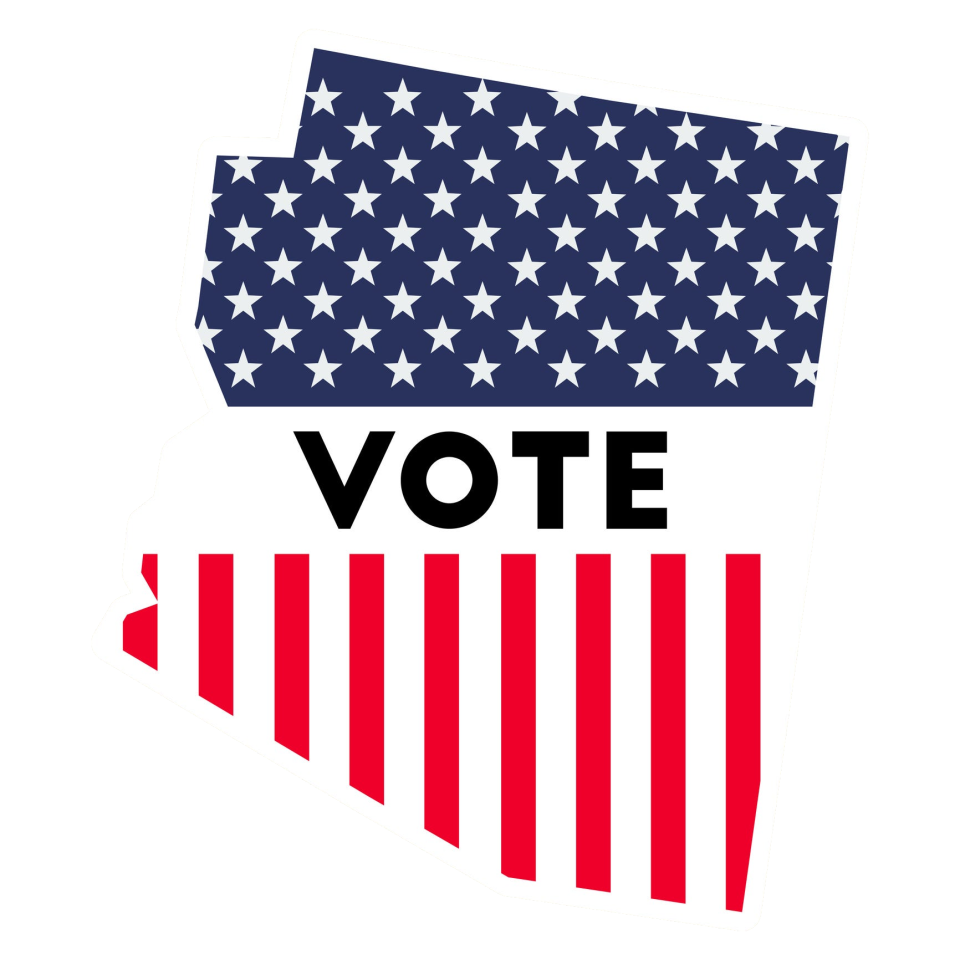Sedona voters face different visions in upcoming mayoral election
With less than a month left to decide who to elect as Sedona mayor, more than 100 residents to the Performing Arts Center on Wednesday night to hear the city's vice mayor, Scott Jablow and challenger Samaire Armstrong, answer questions from voters.
In the forum hosted by the League of Women Voters of Northern Arizona and the Sedona Chamber of Commerce and Tourism Bureau, the questions covered a wide range of topics that are top of mind for many Sedona residents, including local governance, tourism, affordable housing, the environment and short-term rentals.
While everyone seemed to agree that the city has a plethora of very real issues to deal with, there is a great divide about what which one should be dealt with first and how.
Election results: Voters in Sedona to choose new mayor, 3 City Council members
Some voters, like west Sedona’s Peggy Chaikin, prefer a candidate with more experience over one with new ideas but little practice putting those into action.
“I think one candidate really wins with performance and the other wins with substance,” Chaikin said, of mayoral race.
Jablow, a retired police officer from New York City, has routinely leaned on his near decade of experience serving Sedona and the projects he has helped implement as proof that he will be able to get things done as mayor.
On the other hand, Armstrong, a former actress who grew up in Sedona, presents a new vision for the city's future, focused primarily on growth and healing while leaving the influence of the current city government in the past. This includes running the city, which she calls the "jewel of Arizona," with a mindset focused on small government and less regulation.
In a city that is short at least 1,500 affordable housing units, creating housing solutions is top of mind for many voters and has been a city council priority for years now.
Chaikin, who has been here for more than 50 years, agreed the city needs to be prioritizing affordable housing right now.
“We need a place where people can afford to live and we don’t want them driving in here to work,” she said. “We want them to be able to walk to work and live like human beings that are part of the community.”
Armstrong is vehemently against moving forward with any projects involving the Department of Housing and Urban Development and thinks many of the answers to Sedona's housing crisis can be found in rethinking the city's current procedures.
Armstrong is also hesitant to develop much more of Sedona's natural land, instead preferring for affordable workforce housing to be established outside of the city.
Jablow on the other hand supports an approach that brings more permanent residents within city limits, hoping this will in turn bring back families to revitalize schools and patronize local businesses.
Meanwhile, some residents look at Jablow’s experience in the past as evidence of exactly why change is so badly needed.
“He created the problem and now we’re supposed to vote him in to fix it, that’s real typical government,” said Savas Sosangelis.
“At that point I’m willing to take a chance on Samaire,” he said.
In addition to presenting their vision for Sedona’s future, the candidates did not hide their distaste for one another, both making sure to criticize the other whenever possible.
Voters took note, especially considering less than a week ago, the candidates took part in an even more combative debate where, at times, the animosity leaked out into the audience.
“I thought it went better than the last one,” said Sedona resident Michael Wright, “but the anger I don’t understand.”
Wright admits that Sedona is facing its fair share of problems but that doesn’t take away from the distinct privilege that comes with waking up among the red rocks every day.
“I think people would die to be here,” he said of living in Sedona. “Wait a minute, look where you are, how could you possibly be so angry?”
For soon-to-be residents Michael and Mackenzie McPherson, the beauty and healing connected to the land was one of the most appealing things about Sedona when they were thinking about where to plant their family's roots.
While all the important issues were covered, Michael said, there was a noticeable amount of tension in the room.
“There’s a level of combativeness between the opponents which is natural for things like this but I think for us, we want to see people just be able to debate the topics and share information as opposed to going back and forth with personal attacks,” he said.
Like many people, both the McPhersons and Wright want to see Sedona foster a thriving and diverse local economy, especially as a downturn in tourism has translated to less overall business.

Election guide: November 2022
City races | School boards | State | Governor
| Ballot measures | Federal races | How to vote
Instead of changes coming from the establishment, Michael McPherson said they should work on enticing more entrepreneurship in the area and letting that innovation lead the way.
Importantly, Sedona operates on a council-manager form of government which means that day-to-day operations, the drafting of the city budget and the carrying out of council directives are handled by the city manager. The mayor represents the city in official capacities on local, state and national levels but has the same voting power as every member of the City Council.
Early voting in Arizona began on Oct. 12 and will continue up until Election Day on Nov. 8.
Contact northern Arizona reporter Lacey Latch at llatch@gannett.com or on social media @laceylatch. Coverage of northern Arizona on azcentral.com and in The Arizona Republic is funded by the nonprofit Report for America and a grant from the Vitalyst Health Foundation in association with The Arizona Republic.
This article originally appeared on Arizona Republic: Sedona mayor election: Scott Jablow. Samaire Armstrong in contrast

